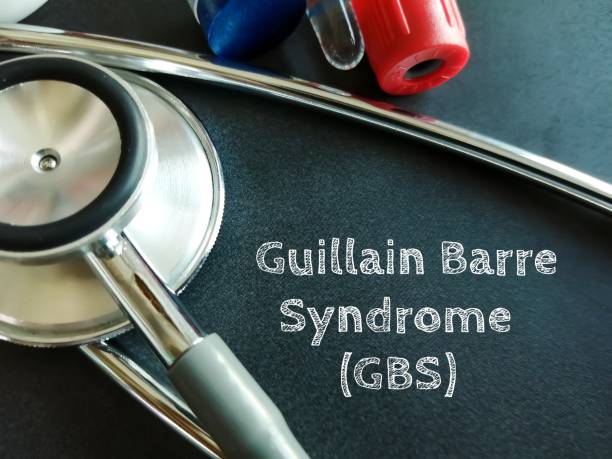Mitochondria, the powerhouses of our cells, play a crucial role in energy production, but Long COVID can severely impair their function, leading to persistent fatigue. Research suggests that SARS-CoV-2 disrupts ATP production, increases oxidative stress, and triggers chronic inflammation, all of which contribute to mitochondrial dysfunction. This article explores how mitochondrial damage occurs in Long COVID and provides science-backed strategies—such as diet, supplements, and gradual exercise—to support mitochondrial health and improve energy levels. If you’re struggling with post-viral exhaustion, understanding and addressing mitochondrial dysfunction may be key to recovery.
Understanding Mitochondrial Dysfunction in Long COVID
Why Are Mitochondria Important?
As mentioned at the outset, mitochondria are the powerhouses of our cells and are responsible for generating ATP—the body’s main energy currency. So when mitochondria are damaged or dysfunctional, fatigue, muscle weakness, and brain fog can occur. In fact, brain fog is one of the first indicators of mitochondria damage. Fatigue, muscle weakness and overall malaise appear shortly thereafter.
How Does Long COVID Affect Mitochondria?
Research suggests that SARS-CoV-2 can directly impair mitochondrial function, leading to chronic fatigue in Long COVID patients (Nature Communications). In fact, according to several studies, there is strong evidence that almost all viral infections disrupt ATP production and increase oxidative stress, further reducing cellular energy levels (Frontiers in Immunology).
Key Mechanisms of Mitochondrial Dysfunction in Long COVID
1️⃣ Increased Oxidative Stress
When you get sick, your body releases immune signals to fight off the virus. But in Long COVID, this response doesn’t shut off properly, leading to excessive oxidative stress. Oxidative stress happens when harmful molecules called reactive oxygen species (ROS) build up and overwhelm the body’s natural defense systems. In Long COVID patients, studies have found elevated ROS levels, which damage mitochondria and make it harder for cells to produce energy (Antioxidants). This can leave you feeling constantly drained, even after a full night’s sleep. Eating antioxidant-rich foods and supporting your mitochondria with the right nutrients may help reduce this damage and restore energy levels.
2️⃣ Impaired Energy Production
Think of mitochondria as tiny batteries inside your cells. When working properly, they take in oxygen and nutrients and convert them into ATP, the fuel that powers everything from muscle movement to brain activity. But in Long COVID, these batteries don’t charge properly. The virus disrupts how mitochondria process oxygen, leading to lower ATP production and chronic exhaustion (Cell Reports Medicine). This explains why even minor activities, like taking a short walk, can feel like running a marathon. Supporting mitochondrial function through proper diet, gentle movement, and targeted supplements can help rebuild energy reserves over time.
3️⃣ Inflammation-Induced Mitochondrial Damage
Long COVID is often associated with chronic inflammation, which can damage mitochondria at a cellular level. When inflammation becomes prolonged, it leads to mitochondrial DNA damage, making it harder for cells to produce energy efficiently. A study on post-viral fatigue found that ongoing immune activation contributes to mitochondrial dysfunction and persistent exhaustion (Journal of Inflammation Research). This means that reducing inflammation through an anti-inflammatory diet, stress management, and specific nutrients like omega-3 fatty acids may be key in restoring energy and alleviating fatigue.
How to Support Mitochondrial Health for Long COVID Recovery
🥗 Mitochondria-Boosting Diet
- Increase Antioxidants: Consume berries, green tea, and dark leafy greens to combat oxidative stress.
- Prioritize Healthy Fats: Include omega-3s from wild-caught fish and flaxseeds to support mitochondrial membranes.
- Limit Processed Carbs: Reduce sugar intake to prevent mitochondrial dysfunction.
💊 Best Supplements for Mitochondrial Repair
- CoQ10: Enhances ATP production and reduces oxidative stress.
- Alpha-Lipoic Acid: Supports mitochondrial function and reduces fatigue.
- Magnesium: Essential for mitochondrial energy metabolism.
🏃 Improve Exercise Tolerance Gradually
- Try paced movement therapy like low-intensity walking or yoga to improve mitochondrial efficiency. Gradual increase in movement tends to have better and more long term results compared to sudden bursts of exercise.
- Avoid overexertion to prevent post-exertional malaise (PEM). This is common in Long COVID patients and can make your condition worse rather than improve it.
⚠️ When to Seek Medical Help
If fatigue is severe and persistent, consult a healthcare provider. Some Long COVID patients develop conditions like chronic fatigue syndrome (ME/CFS), which may require specialized treatment (Mayo Clinic). If you notice symptoms like dizziness, heart palpitations, or severe muscle weakness, seeking medical guidance can help rule out other underlying conditions and provide appropriate support.
Final Thoughts
Mitochondrial dysfunction plays a central role in Long COVID fatigue. Supporting mitochondrial health through diet, supplements, and paced activity may help improve energy levels and reduce symptoms. Recovery takes time, but small, consistent changes can make a noticeable difference in daily energy levels and overall well-being.
Read more about how to beat Long COVID fatigue here.
📩 Want more Long COVID recovery tips? Subscribe to our newsletter!


